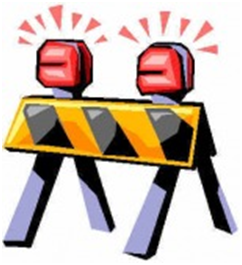Barriers to Acceptance
In order for the hospital to successfully embrace the new chart order, leaders should be aware of some of the potential barriers that may slow or hinder its acceptance among staff. Although difficult to predict, each organization may/will encounter barriers quite unique to their own individual setting. Here is a list of some of potential hurdles:
· Attitudes and values among staff members such as willingness to adapt to
change, perceived usefulness of the new chart order and the feeling that the system is being forced onto providers;
· Failure to involve those affected by the change;
· Loss of productivity and strain on staff while trying to adapt to a new chart order;
· Failure to put change management plan in place;
· If the pace and tempo of the change is too fast-paced, it can lead to change fatigue;
· Insufficient numbers of people to put into operation all of the desired changes;
· Formation of a low credibility committee to drive the change;
· Lack of collaborative culture;
· Low motivation to change among staff;
· Distrust of management;
·Organizations with strong cultures may resist change;
· Too many other changes occurring in the hospital at the same time;
· Education - both insufficient or inappropriate training for staff;
· Lack of effort made for clinical buy-in, especially among physicians;
· Inability to fully illustrate the potential impact/benefits to stakeholders;
· Lack of organizational/ management support;
· Slow paced change of the chart order can lead to mobilization of power and increased resistance among units in the hospital that may be opposed to the change; and
· Resistance to change among key leaders or staff.
(Schumann, 2006; McKenzie, 2007;Meyer,Stensker & Inger, 2006).
.
· Attitudes and values among staff members such as willingness to adapt to
change, perceived usefulness of the new chart order and the feeling that the system is being forced onto providers;
· Failure to involve those affected by the change;
· Loss of productivity and strain on staff while trying to adapt to a new chart order;
· Failure to put change management plan in place;
· If the pace and tempo of the change is too fast-paced, it can lead to change fatigue;
· Insufficient numbers of people to put into operation all of the desired changes;
· Formation of a low credibility committee to drive the change;
· Lack of collaborative culture;
· Low motivation to change among staff;
· Distrust of management;
·Organizations with strong cultures may resist change;
· Too many other changes occurring in the hospital at the same time;
· Education - both insufficient or inappropriate training for staff;
· Lack of effort made for clinical buy-in, especially among physicians;
· Inability to fully illustrate the potential impact/benefits to stakeholders;
· Lack of organizational/ management support;
· Slow paced change of the chart order can lead to mobilization of power and increased resistance among units in the hospital that may be opposed to the change; and
· Resistance to change among key leaders or staff.
(Schumann, 2006; McKenzie, 2007;Meyer,Stensker & Inger, 2006).
.

